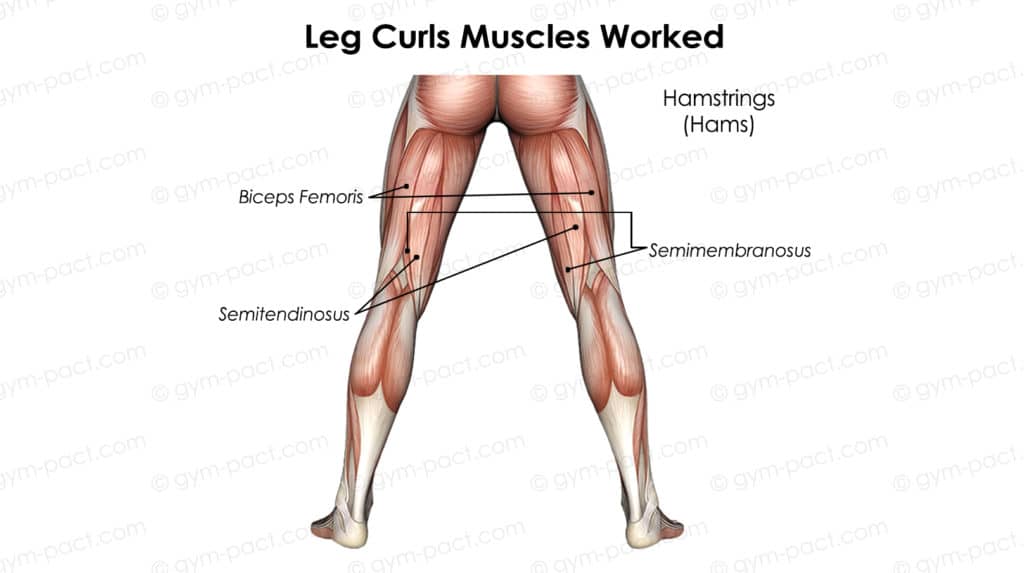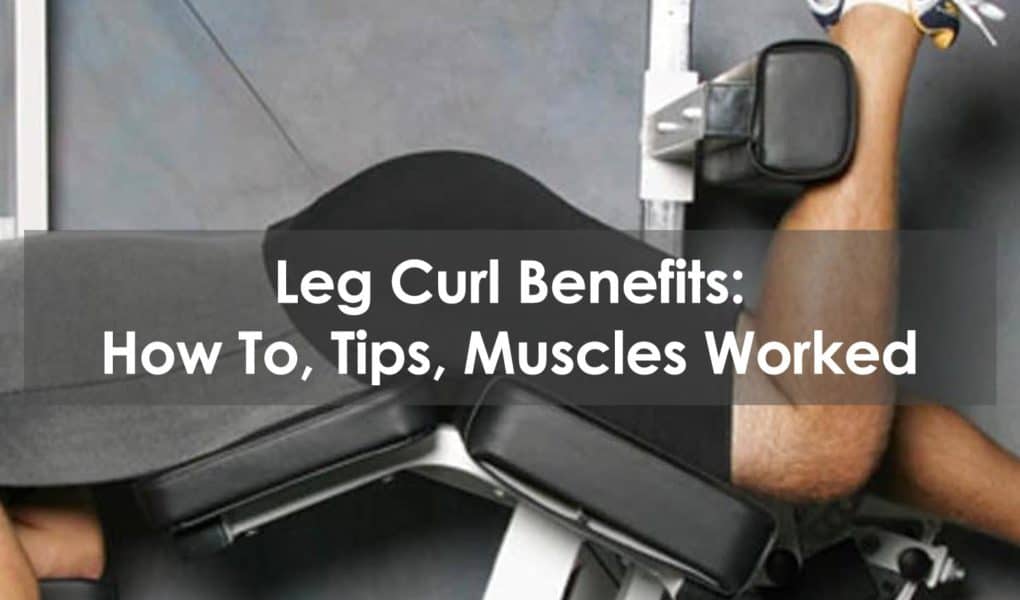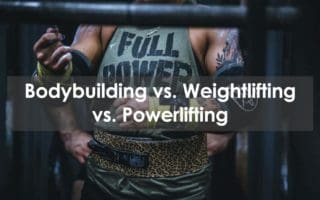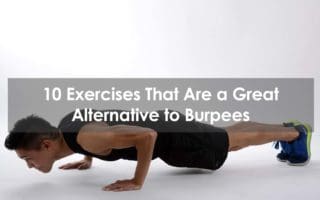Nobody enjoys leg day. Lactic acid build-up during the workout, sore muscles for days after the workout, and of course, none of the glamour that upper body workouts bring. Yet those unfortunate enough to be on their nominated leg day often aren’t found far away from a leg curl machine.
You may have seen lifters in the gym lying on their stomach and grimacing in pain as they slowly curl their way to huge hamstrings.
However, the leg curl benefits users in many ways beyond hamstring bulking. Our in-depth guide is here to explain how, and why we should all be incorporating the leg curl into our lower-body workouts.
How to do the Leg Curl
The leg curl is one of the most effective isolation exercises for building muscles. It primarily targets bulking and strengthening of the hamstring muscle, making it a go-to machine for bodybuilders and powerlifters.
Leg curls are usually executed on a specially designed gym bench, with a levered lifting bar at the foot of the machine. The most common version you will see involves lifters lying on their front, bringing their legs towards their back against resistance.
Check out our step-by-step guide to perform the perfect leg curl:
- Set your desired weight by adjusting on the weight stack provided and set the lever to the correct height.
- Lie front down on the bench, place your arms in the pads that should be provided. Place your legs under the lever. This is your starting position. If the pad is at the correct height, it will be resting on your ankles when in the extended position.
- Keeping your torso flat, lift your legs as far as you can without lifting your upper legs. Hold this position for a second before returning to the start.
- Repeat for the recommended number of reps
Coaching Tips
Weight management:
When practicing the technique, try using a lighter weight at first. This will stop you from swinging and jerking your legs which can lead to hamstring injuries.
Once the technique is mastered you can begin to use additional weight.
HIIT Variation:
Go for lighter weight and faster reps for a HIIT workout on the leg curl. This is useful if trying to build cardiovascular strength and muscle toning.
Go for slow and controlled movements to increase muscle mass, holding at the top.
Improve Mobility:
Make sure to use the full range of motion available to you when moving the weight up and down. This will improve your mobility and over time you should find you can move the weight further and further.
Muscle Imbalance:
Overusing isolated exercises can lead to muscle imbalances. This can both increase your risk of injury and hinder performance in compound exercises such as squats and lunges.
To avoid this, consider using the leg curl alongside a leg extension to work both the back and front of your legs at the same time. Leg extensions target the quads and their surrounding muscles, complimenting the leg curl beautifully.
Muscles Worked

The primary muscle worked by the leg curl is the hamstring. Athletes of all sorts will use the leg curl to build strength and power in the hamstring.
Other thigh muscles are activated as you raise and lower the weight. As you descend your glutes and quads are activated to support the shift in the resistance. Both calf muscles and shins are activated to support the hamstrings in the curl and descending.
Leg Curl Benefits
There are plenty of benefits to the leg curl which makes them a staple part of lifters’ workouts.
1. Muscle Growth
The primary benefit of the leg curl is its ability to promote serious muscle growth in the hamstrings.
By building strength in these crucial leg muscles, lifters will have more support for their squats and deadlifts. Greater leg strength and power allow them to go deeper into the squats and lift a lot more.
Of course, bigger hamstrings are aesthetically pleasing too!
2. Increased mobility and flexibility
The leg curl takes your legs through a greater range of motion than most other leg exercises. This means it works alongside other hip extension exercises supporting increased flexibility and mobility in the hamstrings.
Flexible and mobile hamstrings can have a huge influence on your overall strength, balance, and stamina. They can support other gym exercises such as deeper squats and lunges. The extra mobility can even support day-to-day activities, protecting your muscles from strain as you go through your daily chores.
3. Injury Prevention
The leg curl exercise is brilliant if you’re prone to injuries. Hamstring and knee injuries are amongst the most common for gym-goers and lifters, so looking after these body parts is crucial for injury prevention.
The leg curl is low-impact so your joints aren’t suffering in the same way they do on lunges for example. The low-impact nature can reduce the amount of resistance in the muscle tissue which improves its durability and mobility.
As we’ve already looked at, the leg curl promotes an increased range of motion. The more you use the leg curl, the further your muscles will be able to travel before they get injured.
Hamstring injuries are not only painful but can also prevent you from achieving your workout goals. Our hamstring muscles are crucial for performance in a wide variety of exercises such as the squat, so it pays to keep them healthy
4. Maintenance of Healthy Joints
The leg curl is a fantastic exercise for improving and maintaining healthy joints. Hamstrings cover both hip and knee joints, so both are used extensively in hamstring exercises. The knee is vulnerable to injury, so keeping those joints healthy can help prevent problems in the future.
The repeated knee extension and knee flexion movements keep them constantly moving and rotating. This increased use under low-impact is crucial to keeping your knees healthy and supple.
Variations and Progressions of the Leg Curl
If for whatever reason you are unable to access a leg curl machine or find yourself struggling to perfect the form, there are a variety of variations that can provide the same benefits, building leg strength and hip mobility.
Seated Leg Curl
This exercise is similar to the leg extension in that you are in a seated position with your legs resting against a pad. Rather than extending your legs outwards, you curl inwards bringing the pad towards you.
This is a good variation if you struggle to keep your torso straight on the classic variation as the back pad provides support. They also offer less targeted development of the hamstrings, building all-around leg muscles.
One-leg curl
This uses the same position as the classic curl, but just one leg curls against the resistance. This variation is an excellent exercise for an evening out of muscle imbalances in different legs.
This will help stability and form on compound exercises such as squats and deadlifts. Just be sure to use a lesser weight than you would for both legs to avoid jerking and swinging.
Stability ball leg curl
This exercise requires you to lie supine on the floor and position your feet on top of the stability ball. Hinging at the knees, you roll the ball towards you with your calves.
As it uses no extra weight, this exercise is great if you’re looking to improve mobility and flexibility in your legs.
Conclusion
So, there we have it, the leg curl has numerous benefits beyond just giving us huge hamstrings. By incorporating it into our leg-day workout, we can develop strong and supple hamstrings, supporting not just our gym exercises but also our day-to-day chores.
Frequently Asked Questions
Are hamstring curls necessary?
There aren’t many exercises that isolate the hamstrings, making them rather difficult to develop in the same way we develop our quads and glutes. If your goal is body-building then the leg curl is the best way to develop the hamstrings.
Are seated or lying leg curls better?
Seated leg curls support your torso and back which can make it easier to manage your breathing. If lifting heavy weights then seated curls may be more suitable as breathing can affect the quality of your curl.
Lying leg curls do target the hamstrings more than seated curls though, offering more development.
How much should I hamstring curl?
It completely depends on your fitness goals. If your target is muscular growth and development then a higher weight is better, with slow and controlled reps. If your target is weight loss then low weight with fast reps is ideal.







